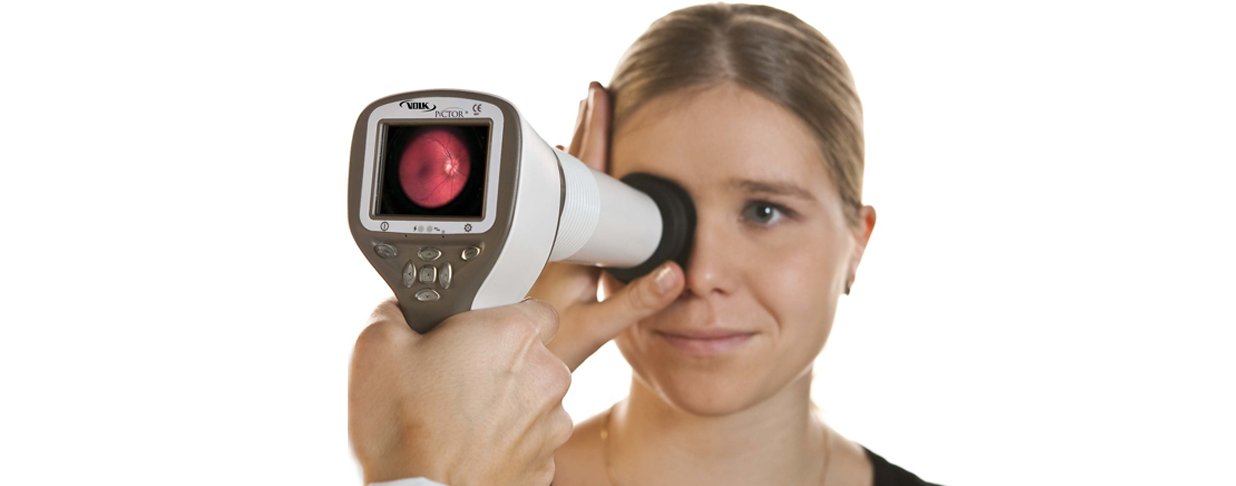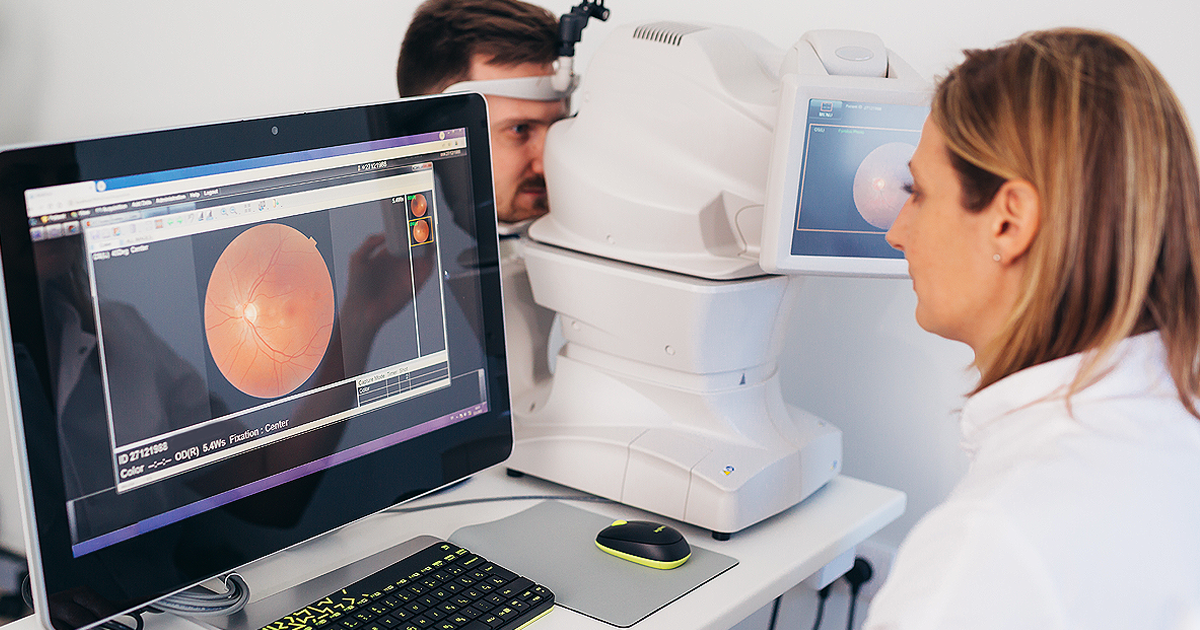It’s no secret that stress can affect the body. Long-term stress has been linked to headaches, muscle aches, sleep issues, digestive problems, cardiovascular illness and high blood pressure, to name a few.1 Emotional health is at risk too, as stress can lead to anxiety and depression.2
It’s important to note that stress can impact eyesight too. Because when your employees’ vision isn’t at its best, neither is their work, their productivity or their day-to-day lives.3
How stress manifests in the eyes
When triggered by stress, the brain perceives that the body is under threat or attack and activates its fight-or-flight response. This causes a surge in the stress hormones cortisol and adrenaline, which increase heart rate and blood pressure, tighten muscles, and slow certain parts of the body. Cortisol and adrenaline even change breathing to bring more oxygen to the blood.1 When this happens for days, weeks, months, or years without rest, it affects the body—and the eyes.
Some common symptoms of stress that appear in the eyes include:4, 5
- Pupil dilation
- Blurry vision
- Light sensitivity
- Eye twitching
- Eye strain
- Floaters (not caused by stress, but stress can heighten awareness of them)
Combined with stress over time, these symptoms can lead to eye conditions such as dry eye disease and glaucoma. The most common form of glaucoma isn’t caused by stress, but long-term stress can affect the optic nerve and trigger an attack of acute angle-closure glaucoma (also called narrow-angle glaucoma). Symptoms to look out for include sudden eye pain, foggy vision, nausea, or halos around lights. This is a medical emergency and requires immediate treatment to prevent vision loss.5
Emotions, stress, and vision issues
Emotions activate the body’s fight-or-flight response and stress hormones just like stress. Our pupils dilate in response to emotions such as love or fear. From happiness to anger, emotions can trigger the body’s cardiovascular, skeletomuscular, neuroendocrine, and autonomic nervous systems into reactions. Long-term experiences of intense emotions like sadness, fear, grief, and anger can lead to anxiety and depression.6
Anxiety and depression can manifest in the body and the eyes the same way stress does. It’s important to note that some medications prescribed to treat these conditions, like selective serotonin reuptake inhibitors (SSRIs), can cause dry eye as a side effect.5
Eye strain and stress at work
In 2022, American workers spent an average of 11-13 hours per day looking at or working on their electronic devices.7 Combined with stress at work, these factors add strain to the eyes, which can result in computer vision syndrome. The condition is not uncommon—78 percent of adults have experienced eye strain associated with computer vision syndrome, and many cite neck, shoulder, or back pain after prolonged use of a computer or handheld mobile device.8
People typically find relief from computer vision syndrome by taking a few simple steps:8
- Reduce screen time
- Take breaks often, like a 15-minute break every two hours, and use the 20-20-20 method. Every 20 minutes, look at something at least 20 feet away for 20 seconds.
- Limit reflections and glare on any screens
- Make text bigger and zoom in when possible
- Adjust settings to read dark print on a light background
Reducing stress
According to the American Institute of Stress, stress is an inescapable part of life—so learning how to reduce its impact on your employees’ wellness is critical. Fortunately, there are many ways to reduce both stress and its long-term effects:4
- Exercising at least 30 minutes for most days of the week
- Getting a full 8 hours of sleep nightly
- Eating a healthy diet
- Spending more time outdoors
- Meditating or deep breathing exercises
- Talking to friends or loved ones
- Talk therapy
Educating employees on stress and vision
The stress hormones cortisol and adrenaline are unavoidable parts of daily life, but long-term exposure can be harmful to the mind, the body and the eyes. It’s just one of the reasons an annual eye doctor visit is critical for maintaining full-body health. Not only can an optometrist help treat symptoms of stress like dry eye and eye strain—an eye exam can also detect other conditions caused by stress, like hypertension and glaucoma.9
Thankfully EyeMed makes it easy for your employees to schedule a trip to the eye doctor. For more information, reach out to your EyeMed representative or visit eyemed.com.
••••
1 Hui, A.; “How Does Stress Manifest in the Body?”; Verywell Health; verywellhealth.com; Updated April 5, 2023.
2 Lockett, E., MS; “Emotional Signs of Too Much Stress”; Healthline; healthline.com; Updated April 10, 2023.
3 “Economic Studies”; Centers for Disease Control Vision Health Initiative (VHI); cdc.gov; Reviewed November 16, 2022.
4 “How Stress Affects Your Vision”; American Institute of Stress; stress.org; Updated June 27, 2022.
5 Mukamal, R.; “Surprising Links Between Stress and the Eyes”; American Academy of Ophthalmology; aao.org; January 31, 2023.
6 Pederson, T.; “What Are Physical Emotions?”; PsychCentral; psychcentral.com; Updated August 29, 2022. All I could locate is that this is from 2013,
7 Belden, M. E.; “Has WFH changed the way we see?”; All About Vision; allaboutvision.com; June 15 2022.
8 “Computer Vision Syndrome”; Cleveland Clinic; my.clevelandclinic.org; Reviewed February 19, 2023.
9 Stepko, B.; “8 health problems that can be detected through an eye exam”; AARP; aarp.org; November 15 2021.




